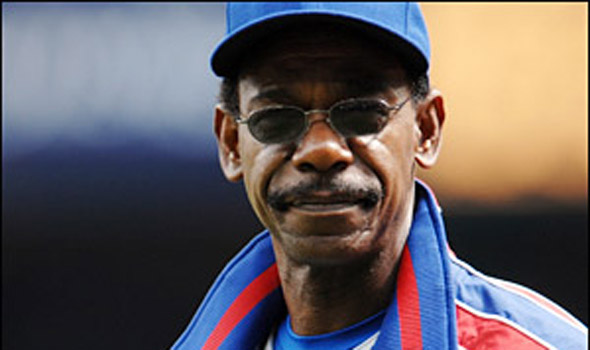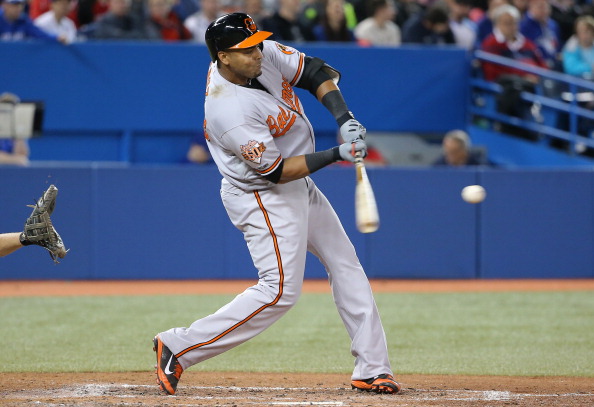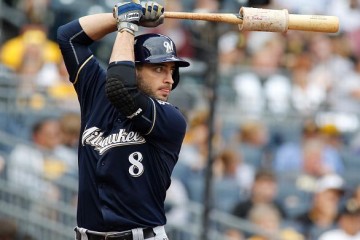2013 Fantasy Baseball, The Fielding Edge: Texas Rangers and Oakland Athletics

Author’s Note: This is the fourth edition of a seven part series on fielding and how it could affect your fantasy team and the trade deadline. We are profiling the top two teams in each division because those are the teams most likely to deal for players to help them down the stretch. During the process, we will discuss some fairly complex topics as it pertains to fielding. If you did not catch the first edition of this series, you can scroll to the bottom for a glossary of terms.
“He was born on third base and he thinks he hit a triple.” – Gen. Colin Powell
The good general was speaking about George H.W. Bush in this particular quote, but he could have said that about a number of people. Some people are not blessed with self-awareness and are often mystified by their own “genius”. The battle between the Oakland Athletics and Texas Rangers could be seen as a battle between the haves and the have nots, but it could also be a battle between the smart and the not so smart.
As we focus our attention on the Rangers, we notice that they aren’t likely to make many more deals before the deadline after acquiring Matt Garza. Yet, you can’t help but think something is missing when looking at the standings and at the numbers. Whether it be payroll, an organizational chart, or a simple eyeball test, you would naturally assume that the Athletics would never be able to compete with the Rangers, but there they are at the top of the standings.
The quote above encapsulates the Rangers perfectly. They probably have more defensive talent than any other team in baseball and yet they aren’t performing that way. When you look at the team DER and their breakdowns individually you will see a great divide you won’t see with any other team in the game. It cannot be an accident. I’ve always believed the Rangers have won in spite of Ron Washington and not because of him and the numbers below reflect that.
Texas Rangers
|
INN |
+/- |
Runs |
||
| C | A.J. Pierzynski |
596 |
—- |
+1 |
| 1B | Mitch Moreland |
688 |
+3 |
+1 |
| 2B | Ian Kinsler |
581 |
+10 |
+8 |
| 3B | Adrian Beltre |
771 |
-2 |
-2 |
| SS | Elvis Andrus |
804 |
+8 |
+6 |
| LF | David Murphy |
730 |
+12 |
+7 |
| CF | Leonys Martin |
601 |
+15 |
+9 |
| RF | Nelson Cruz |
797 |
-3 |
-3 |
| Total |
5568 |
+43 |
+27 |
We have not seen a team so far with this collection of individual fielding talent. It remains to be seen if any of the remaining seven teams (counting the A’s) will approximate it, but it isn’t likely. Yet their overall team DER (.692) ranks below the league average of .693. That seems unfathomable and yet when looking at the above it is difficult to see where they could improve. Adrian Beltre is normally better than he is showing and Nelson Cruz is too productive offensively. So, you are left looking at the coaching staff for improvement.
The Rangers have all the talent and none of the results while the Athletics have less talent and more results. The Athletics embody the idea that the whole is greater than the sum of its parts. Their overall team DER is an astounding .714. That is more than twenty points better than the league average and obviously makes their pitching staff look that much better. The totals are proof that both Bob Melvin and Billy Beane use multi-dimensional thinking when building the roster and choosing the lineup on a daily basis.
When you look at the Athletics’ numbers you will notice a few major differences with the Rangers. Unfortunately, these differences make using Athletics on your fantasy team problematic. The Athletics have fewer innings among their eight starters than any other team we have profiled so far. That is mainly because the A’s utilize platooning more than any other team. John Jaso plays more behind the dish than most backup catchers. Nate Freiman plays a considerable number of innings at first. Seth Smith and Chris Young play a good deal in the outfield. The end result is more mixing and matching than we are used to.
Oakland Athletics
|
INN |
+/- |
Runs |
||
| C | Derek Norris |
500 |
—- |
-2 |
| 1B | Brandon Moss |
564 |
-7 |
-5 |
| 2B | Eric Sogard |
578 |
+8 |
+7 |
| 3B | Josh Donaldson |
854 |
+5 |
+6 |
| SS | Jed Lowrie |
777 |
-19 |
-15 |
| LF | Yoenis Cespedes |
590 |
+5 |
+1 |
| CF | Coco Crisp |
533 |
+11 |
+2 |
| RF | Josh Reddick |
563 |
+8 |
+9 |
| Total |
4959 |
+11 |
+3 |
Consider a simple eyeball test. How many of the A’s regulars would start for the Rangers if you considered both fielding and hitting? I would surmise that Cespedes would likely get the call in left field and perhaps Crisp would get the call in center. That’s debatable though and when you consider the idea that none of the infielders would get the call it makes you wonder how the A’s are so successful.
The answer is simple when you break it down, but if it were really this simple everyone would be doing the same thing. They focus on putting players in a position where they will be most successful. Take John Jaso. He does not hit lefties well, so it makes little sense to put him in against lefties. Brandon Moss is the same way. So, when they face lefties you will see Nate Freiman and Derek Norris. The same kind of pattern follows with the rest of the roster.
So, you get better overall performance by breaking players into their more productive parts then you get with the whole player. So, each player looks better because they are only playing in situations where they are likely to be successful. In such a world, you have to look at the trade deadline differently. Instead of looking for what regular player they might add, you have to look at what part(s) they are currently missing.
The above date indicates that Jed Lowrie is likely to be supplanted. Grant Green recently replaced Eric Sogard at second base, so they really only need someone capable of hitting his weight and fielding the shortstop position competently. Lowrie can do the latter, but he struggles with the former. However, he can play second, short, and third, so he does serve a valuable purpose. The A’s have been rumored to add a shortstop for the last several seasons, but I wouldn’t necessarily expect them to add a regular shortstop. They may add a part-time player that can effectively platoon with Jed Lowrie. Otherwise, the A’s will likely ride what they currently have. Their overall roster may be underwhelming, but they manage to get the most out of it.
Glossary of Terms
DER- DER stands for Defense Efficiency Rating. It can be found at both baseball-reference.com and at baseballprospectus.com. We are using the Baseball Reference version above. Essentially, it calculates the percentage of batted balls that are put into play that a defense converts into outs. So, if the league average is .693, it means that the league average defense converts 69.3% of all batted balls in play into outs.
+/– John Dewan’s Fielding Bible system uses video technology to track every batted ball in play. Through extensive study, they have determined the average number of plays each fielder should make based on the balls that are hit into his fielding zone. The researchers calculate an average based on the number and relative difficulty of those plays. If he makes more plays than expected he has a positive rating. If he makes fewer plays then he has a negative rating.
Runs—The researchers place a run value on the plays based on the expected number of runs that a successful play would have saved or an unsuccessful play would have not saved. Usually, a player with a positive +/- will also have a positive run value, but that isn’t always the case since some plays will carry more run value than others.




